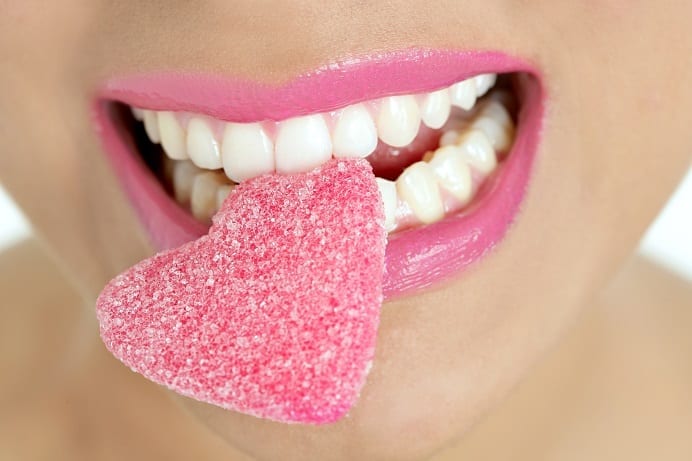Pericoronitis is a dental condition or disorder involving the gums surrounding a wisdom tooth. When this particular gingiva swells and gets inflamed due to an infection or because of something happening to the third and final set of molars adults get in their early twenties or late teens, then that’s when you know you’re suffering from pericoronitis.
This “something” could be partial wisdom teeth impaction and/or poor dental hygiene from the Petri dish of bacteria caused by the formation of a gum pocket or flap that’s hard to access by flossing or brushing. Most pericoronitis patients have a flap of gum tissue that partially covers the crown of the erupting wisdom tooth or teeth, thus causing the bacterial spread and pericoronitis infection in the first place.
Page Contents
What Causes Pericoronitis?
https://www.youtube.com/embed/AlSGwsc8E8Y
Pericoronitis happens whenever wisdom teeth partially erupt or break through the gumline. It also occurs when the impaction happens at an awkward angle due to the lack of jaw space. This typically results in a pocket for bacteria to enter around the tooth, which causes a bacterial infection to occur. As the bacteria accumulate around the soft tissue pocket or gum flap, inflammation then occurs.
Most pericoronitis cases involve plaque—the film of bacteria and leftover food that remains on your teeth after every meal—getting stuck underneath the gum flap or pocket created by the partially impacted wisdom tooth. If this isn’t cleaned our regularly, gum irritation, gingivitis, and outright pericoronitis will come about. The severe version of this infection and inflammation might even extend beyond the jaw and go all the way to the nerves of your neck and cheek.
What Are the Symptoms of Pericoronitis?

There are various symptoms of pericoronitis. They can differ from case to case based on on whether the condition is chronic or acute.
The overall symptoms of pericoronitis across the board include the following:
- Fever
- Pain in general
- Infection and inflammation
- Inflammation of the neck’s lymph nodes
- Pain extending to the jaw, neck, and cheek
- Pain from the gums around the wisdom tooth
- Difficulty in opening your mouth because of lockjaw
- Inflammation of the gum tissue due to the accumulation of pus
- A bad taste in your mouth caused by all the pus leaking from your gums
- Pus or yellow, brown, or white protein-rich material present at the infection site
As for acute or sudden onset pericoronitis, they include the following symptoms.
- Pus discharge
- Trismus or lockjaw
- Swelling of gum tissue
- Pain when you swallow
- Severe pain near your back teeth
Meanwhile, chronic or long-lasting pericoronitis offers the following symptoms instead.
- Bad breath or halitosis
- A dull or mild ache that lasts for 1-2 days
- A bad, bitter taste in your mouth due to pus discharge
What Are The Complications of Pericoronitis?
Pain and swelling around the wisdom tooth or teeth gums aren’t only symptoms of pericoronitis. They’re also its main complications. This then translates various other complications associated with the condition.
- Lockjaw, Painful Bites, and Difficulty Swallowing: You can end up with lockjaw where you can’t open your mouth. You can even have difficulty biting down on or swallowing food as well as talking. There are also cases wherein the infection can worsen and spread from the affected third molar to other neighboring areas of your mouth, like other molars to all the way down to your neck lymph nodes.
- Infection Spread via Bloodstream: Once your infection has spread unchecked in your body, it can become dangerous enough once it spreads to your neck and head. This infection is capable of spreading through the bloodstream, leading to what’s known as sepsis. Even though it’s a rare occurrence, pericoronitis can become life threatening by worsening enough to cause Ludwig’s angina.
- The Life-Threatening Ludwig’s Angina: Ludwig’s angina is a rare, life-threatening complication that happens at the floor of your mouth, under the tongue. It’s caused by a bad bacterial infection that comes about due to tooth abscess of pus in the tooth’s center or, as mentioned, pericoronitis pug discharge from the infected gum flap. It can also happen due to other mouth injuries and infections.
What Are The Risk Factors of Pericoronitis?

In regards to the risk factors of pericoronitis, here are the things you should keep in mind. The following people are usually the most prone to this dental disorder.
- Those who are pregnant
- Those with too much gum tissue
- Those whoa re emotionally stressed and fatigued
- Those with poor oral hygiene or neglect dental health maintenance
- Those whose wisdom teeth have become impacted or hasn’t properly erupted
- Those who are 20 to 29 years of age (that’s when your wisdom teeth usually erupts, hence its name since wisdom usually comes with age)
One’s overall health hasn’t shown to make someone more or less prone to the condition. It’s not as big of a risk factor as, for example, pregnancy or being at the age where wisdom teeth eruption happens.
How Is Pericoronitis Diagnosed?
This condition is basically the inflammation of the infected gums surrounding your third molar. It’s a dental disorder that mostly occurs on partially or wholly impacted wisdom teeth. It’s also a condition that happens more often with mandibular molars instead of maxillary ones.
Expect the following when your dentist is considering a pericoronitis diagnosis.
- Examining The Third Molars: Your dentist will probably first examine your third molars to see if they’re erupting properly or if their eruption is causing your inflammatory and bacterial infection issues. He’ll also determine whether or not the teeth have erupted partially in a way that can cause gum pockets or flaps to form.
- Wisdom Teeth X-Ray: Your dentist might also do a dental x-ray of your wisdom teeth for good measure. He’ll specifically look at the molar’s alignment and how awkwardly it’s placed, which could lead to gum flaps causing the condition. He’ll also take note of any symptoms you have, such as infection or swelling, that could confirm the presence of pericoronitis.
- Checking The Presence of the Gum Flap: Pericoronitis doesn’t only appear because of wisdom teeth impaction. There are times when an impacted wisdom tooth doesn’t cause a gum flap to form, thus your risk for pericoronitis drops. It’s therefore necessary for the dentist to locate the presence of a gum flap or infected soft tissue from an impacted tooth in order to make his pericoronitis diagnosis.
How Is Pericoronitis Treated?
Your dentist will mostly take into consideration a number of factors when making a decision on how to go about pericoronitis treatment. Your three treatment choices include the following.
- Removal of the wisdom tooth itself
- Removal of the flap covering the impacted wisdom tooth
- Pain management of the infected gums around the molar
Pericoronitis treatment typically involves the doctor removing the flap developed from wisdom teeth impaction. He might even extra the wisdom tooth altogether. However, there are times when the best course of action is the treatment of the symptoms if the impacted wisdom tooth or teeth are hard to remove.
Here are your treatment options when push comes to shove.
- Home Remedies for Pericoronitis: If the pain or swelling hasn’t spread due to your condition, thus making its scope limited to the impacted wisdom tooth, you can treat your pericoronitis on the short term with various home remedies like saltwater rinses or a specialized oral hygiene regimen with the flap taken into consideration. Also avoid using hot compresses to relieve the pain. Seek dentist attention if you have developed a fever though.
A couple of pericoronitis remedies that you can try at home include the following:
- Oral water irrigators
- Warm saltwater rinses
- Antiseptic mouthwash rinses
- Floss access to the gum flap without irritating it
- Excellent oral hygiene, including brushing and flossing
What Is The Outlook for Pericoronitis?

After the wisdom tooth has been removed and the gum flap doesn’t exist anymore, the pericoronitis infection is usually cured. In the case of removing the gum flap, this tissue can sometimes grow back. It takes about two weeks for people to recover and heal from a surgical removal. Also, the symptoms-specific treatment for acute pericoronitis should work and treat symptoms within a day or two.
Nevertheless, preemptive care is still the best course of action. Like in the case of dental caries or pyorrhea, it’s usually more expensive to deal with the consequences of neglect than to maintain your health and deal with the issue from the start, when the condition is at its most preventable or treatable. Your chances of this condition lessen with proper hygiene and dentist visits. A pound of cure is more expensive than an ounce of prevention.
Thantakit International Dental Center is Thailand’s longest established dental center. Situated in Bangkok, our clinic is renowned across the world as a destination for world-class dentistry, with most of our patients flying to us from Australia.
Please contact us today to get a FREE dental consultation.












